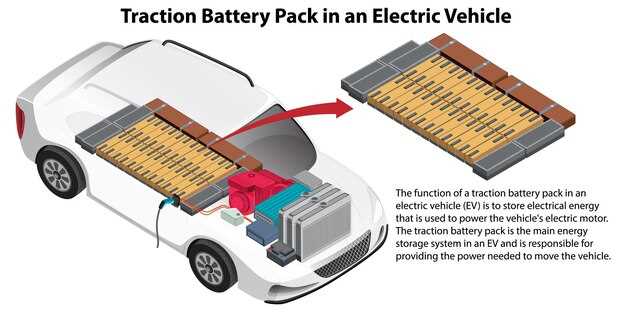
The battle between iconic American muscle cars, the Charger and the Ford Mustang, continues to capture the attention of automotive enthusiasts and casual drivers alike. Both vehicles boast a rich history and are designed for performance, style, and unforgettable driving experiences. However, as the automotive landscape evolves, so do the features and specifications of these legendary models. This article provides an in-depth comparison of the Charger and Mustang, highlighting their performance metrics, design, and technological advancements.
When it comes to performance, the Ford Mustang has long been synonymous with speed and agility. With a range of powerful engine options, from the turbocharged EcoBoost to the mighty V8, the Mustang is designed to cater to various driving preferences. In contrast, the Charger stands out with its bold presence and muscular build, offering performance-driven variants that deliver exhilarating power straight from the factory.
Additionally, technological features in both vehicles have progressed significantly over the years. The Mustang incorporates advanced infotainment systems, driver assistance technologies, and customizable performance settings, while the Charger is equipped with notable features such as all-wheel drive options and spacious interiors. This comparison will delve deeper into each model’s strengths and weaknesses, enabling readers to make informed decisions tailored to their driving desires.
Engine Options and Performance Metrics for Charger and Mustang

The Dodge Charger and Ford Mustang both offer a range of engine options tailored to meet the diverse needs of performance enthusiasts. Each vehicle provides several configurations, catering to different tastes for power and efficiency.
The Ford Mustang boasts various engine choices starting with a turbocharged 2.3-liter EcoBoost four-cylinder engine, delivering about 310 horsepower. This engine provides a balance of performance and fuel efficiency, making it suitable for daily driving. For those seeking more power, the Mustang offers a naturally aspirated 5.0-liter V8 engine, known as the Coyote, which produces around 450 horsepower. Furthermore, the range tops off with the supercharged 5.2-liter V8 found in the Mustang Shelby GT500, pushing the performance envelope with an impressive 760 horsepower.
In contrast, the Dodge Charger begins its lineup with a 3.6-liter V6 engine, generating approximately 300 horsepower. This engine serves as a solid entry point for those looking to combine practicality with a degree of performance. For higher performance, the Charger features a 5.7-liter HEMI V8 engine that produces around 370 horsepower. The ultimate choice in the lineup is the supercharged 6.2-liter HEMI V8, which can deliver a staggering 797 horsepower in the Charger Hellcat variants, making it one of the most powerful sedans available.
Performance metrics for both vehicles vary significantly based on the engine choice. The Mustang GT with its V8 engine can accelerate from 0 to 60 mph in approximately 4.2 seconds, while the higher-performance Shelby model can achieve this in as little as 3.5 seconds. Meanwhile, the Charger R/T with the 5.7-liter V8 can reach 60 mph from a standstill in around 5.2 seconds, and the Charger Hellcat achieves this feat in about 3.6 seconds.
Overall, both the Dodge Charger and Ford Mustang deliver distinct engine options, allowing drivers to select a performance level that suits their preferences. With the Mustang’s emphasis on sporty driving dynamics and the Charger’s blend of power and practicality, enthusiasts will find compelling choices in each lineup.
Technology Features: Infotainment and Driver Assistance Systems
The Dodge Charger and Ford Mustang both come equipped with advanced technology features that enhance driving experience and safety. In terms of infotainment systems, the Mustang typically offers the Ford SYNC system, which includes a user-friendly touchscreen interface, smartphone integration via Apple CarPlay and Android Auto, and a premium audio system option. The Charger features the Uconnect system, known for its responsive interface, extensive app integration, and available navigation package.
When comparing driver assistance systems, the Mustang provides several options aimed at enhancing safety. Features such as Adaptive Cruise Control, Lane Keeping Assist, and Pre-Collision Assist are designed to help drivers remain alert and safe on the road. The Charger also includes a comprehensive suite of driver assistance technologies, including Blind Spot Monitoring, Rear Cross Path Detection, and ParkSense® Front and Rear Park Assist, giving drivers a robust set of tools to mitigate risks while driving.
Moreover, both vehicles support over-the-air updates for their respective systems, ensuring that owners always have the latest features and enhancements. The Mustang’s infotainment system excels in performance-oriented features that are consistent with the car’s sporty nature, providing quick access to performance gauges and driving modes. In contrast, the Charger focuses on a balance between performance and convenience without sacrificing functionality.
Overall, each model offers distinctive technology features catering to varying driver preferences, with the Mustang leaning towards a more performance-centric approach while the Charger emphasizes comprehensive safety and convenience technologies.
Cost of Ownership: Maintenance, Insurance, and Fuel Efficiency

When considering the cost of ownership between the Charger and the Mustang, various factors come into play, including maintenance, insurance, and fuel efficiency. Each vehicle offers a distinct experience, which can significantly influence long-term expenses.
Maintenance for the Ford Mustang tends to be reasonably affordable, particularly for models equipped with naturally aspirated engines. Regular services such as oil changes, brake pad replacements, and tire rotations can be expected to cost approximately the same as comparable sports cars. However, the high-performance variants, particularly those with turbocharged and V8 engines, may require specialized care, which can drive up maintenance costs if issues arise.
Insurance costs for the Mustang can vary widely based on factors such as the driver’s age, location, and driving history. Generally, the Mustang is considered a sports car, which may result in higher premiums compared to standard sedans. However, its reputation for reliability helps some owners secure better rates, especially if they maintain a clean driving record. Comparing quotes from multiple insurance providers is essential to find the best rate for Mustang ownership.
Fuel efficiency is another critical aspect in the cost of ownership discussion. The Mustang offers a range of engine options, with the EcoBoost models providing impressive fuel economy compared to traditional V8s. While the charged variants might not be the best choice for fuel-conscious buyers, they deliver an exhilarating driving experience. On average, EcoBoost Mustangs can achieve around 22-26 mpg in combined driving conditions, whereas V8 models may only yield 15-20 mpg, depending on driving habits.
In summary, Mustang ownership entails balancing maintenance, insurance, and fuel efficiency. While it can offer a thrilling ride, potential owners should evaluate their financial situation and preferences before making a decision. Understanding the cost implications of owning a Mustang compared to a Charger is vital for an informed choice.




